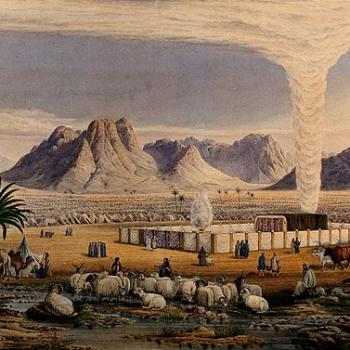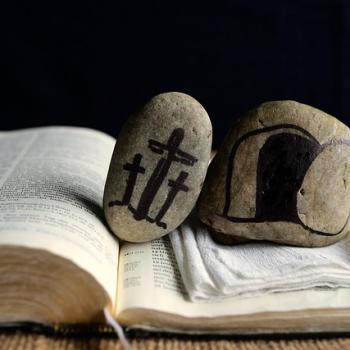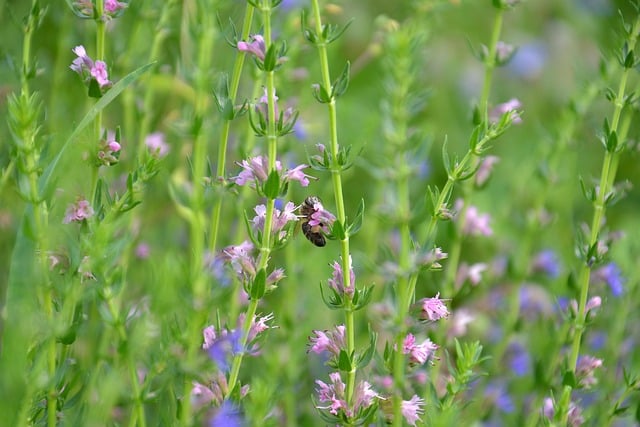
What’s Hyssop?
Hyssop is an evergreen plant native to the Mediterranean region, although is has now been naturalized in North America. Classified as a garden herb, hyssop belongs to the mint family. A perennial, it can survive for several years, exhibiting some new growth each season. The sweet-scented, hardy plant is drought-resistant.
Gardeners cultivate the hyssop for its aromatic flowers and leaves, generally growing it in herb gardens. The perennial typically reaches 1 1/2 feet in height, producing brightly colored flowers of in different shades such as violet, white, and red in the summer.
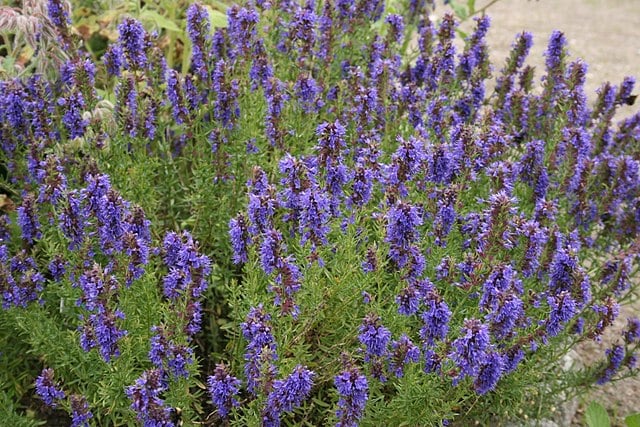
Hyssop In History
History reveals man’s use of hyssop since early times, including ancient Greece and Egypt. The plant held importance in religious, cultural, and social contexts during many periods in history Hyssop receives mention in both the Old and New Testaments of the Bible. Attesting to awareness of the herb and its widespread use, even traditional Chinese medicine values hyssop for its healing properties.
Regardless of the particular culture, religion, or time period, the view of hyssop remains consistent. It generally symbolizes cleansing, purification, and spiritual renewal. Along with that symbolic meaning, the release of burdens and that beginning of new journey is associated with it use.
Hyssop’s Culinary Use In History
Throughout history, hyssop has played a part in the culinary activities of various cultures. People employ the warm, bitter taste of the herb as a flavoring in both their food and beverages. For example, a strong tea can be made with hyssop leaves and sweetened with honey. The well-known Middle Eastern dried herb-spice blend, za’atar, which can be used on many foods, often includes hyssop.
Even in the US today, food writers mention the incorporation of hyssop in cooking. Suggestions include sprinkling dried hyssop on roasted vegetables, replacing mint with hyssop when braising lamb, and adding steamed hyssop leaves to soups and salads.

Hyssop In The Health Context
Beyond its culinary uses, hyssop is a favorite folk medicine as its medicinal value has been recognized for centuries. The strong tea made with its leaves and sweetened with honey serves as a traditional remedy for nose, throat, and lung problems and sometimes as a topical application for bruises. In addition to easing respiratory issues, hyssop promotes digestion and possesses anti-inflammatory and antioxidant properties.
Not only do people turn to hyssop for physical issues and benefits, but they can seek emotional and mental assistance as well. Its fragrance is believed to produce mental clarity and emotional balance. To achieve such results, minty-smelling, pale yellow hyssop essential oil may be poured into a bath or diffuser or applied to the skin.
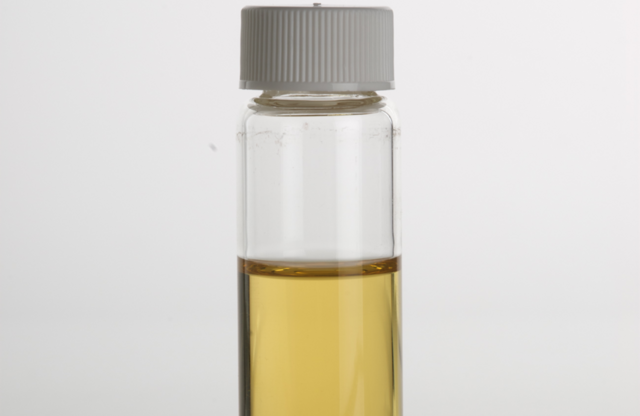
Hyssop In Old Testament Bible History
Old Testament verses specifically mention hyssop in connection with purification rituals. In Numbers 19:6, God’s command for the sacrifice of a red heifer without defect called for the priest to throw cedar wood, hyssop, and scarlet wool onto the burning heifer. The priests sprinkled purifying water with hyssop in the cleansing rituals described in Leviticus 14 for defiling skin diseases such as leprosy. Psalm 51:7 also cites the plant saying, “Cleanse me with hyssop, and I will be clean; wash me, and I will be whiter than snow,” a foreshadowing of Jesus.
Most familiarly, however, the Old Testament story of God’s children in bondage in Egypt contains hyssop in a starring role. To avoid death of the firstborn, God instructed His people to dip hyssop in the sacrificed lamb’s blood and smear that blood on the top and sides of their doorframe of their house.
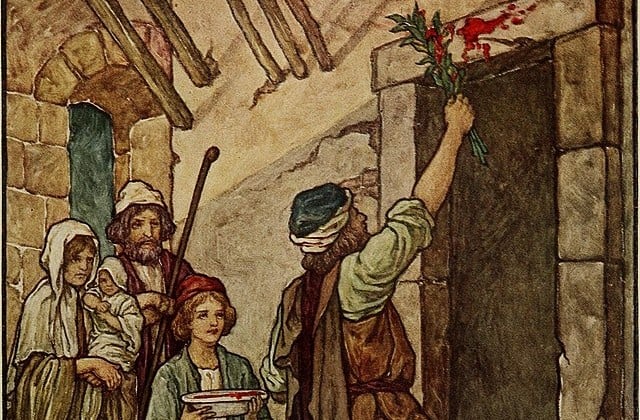
Hyssop in New Testament Bible History
Although not given much attention in the story of Jesus’ crucifixion, hyssop does appear. Just prior to His death, Jesus said He was thirsty. In response, a sponge was soaked in a jar of wine vinegar, placed on hyssop stalk, and raised to His lips. When He finished drinking, Jesus stated, “It is finished,” and died.
The fact the biblical account specifically identifies hyssop as the plant used in this crucifixion scene is important. By providing Jesus a drink using a hyssop stalk evidences a connection between man’s view of hyssop as cleansing and God’s view of Jesus’ sacrifice on the cross as cleaning those who accept Him as Savior.
Hyssop – In History And Health
The sweet-smelling but bitter tasting hyssop continues in use today as it did ancient times. The herb offers both culinary assistance and medicinal benefits. Hyssop’s specific mention in the Bible makes it a plant believers need to know something about. In particular, the plant symbolizing cleansing makes hyssop a meaningful part of the crucifixion story. Learning about hyssop, in history and health, expands a believer’s understanding of God’s world and His plan of redemption for man.








